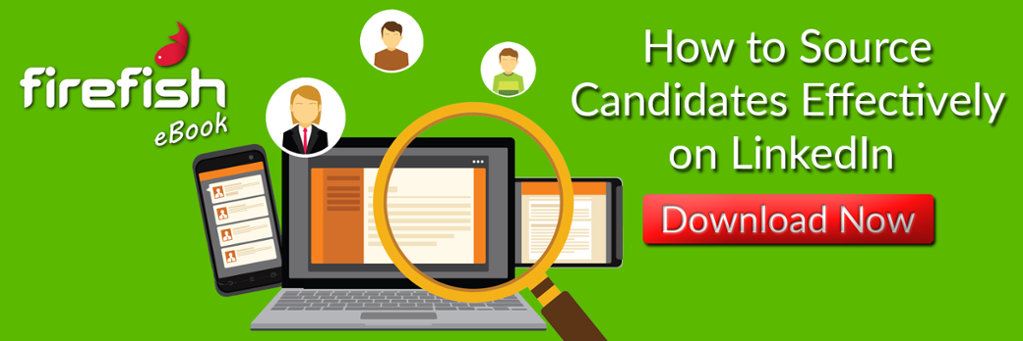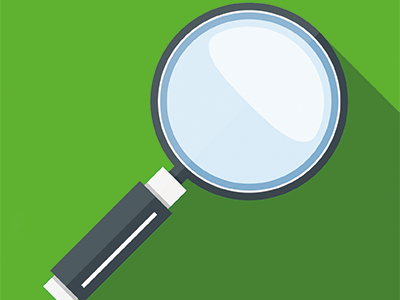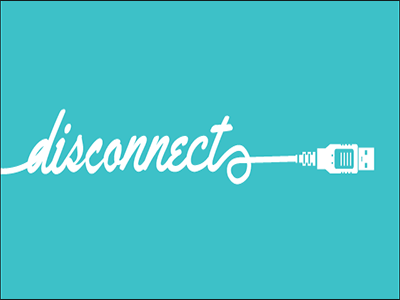If you’ve been sourcing on LinkedIn over the last few weeks, you’ll have noticed some a new section on user’s profiles called Endorsements. Here’s the rundown of what they are and how a recruiter can make the most of them.
What is an endorsement and how do they work?
Directly below an individual’s listed experience is the Skills & Expertise section, where you’ll now find Endorsements. An endorsement is LinkedIn’s equivalent to Facebook’s like: a one-click way to acknowledge someone’s professional skills.
You’ll see beside each skill either a + or a number (reflecting how many endorsements they’ve already received for that skill): to give an endorsement, it’s as simple as pressing there. The numbers displayed in dark blue mean you've already endorsed the user for that skill. If you press one by mistake you can just press it again to retract that endorsement (in much the same way as you can unlike a Facebook post).
If an individual has more than 10 skills listed, only the 10 they have received the most endorsements for will display in this list. The next 10 will appear grouped below like this:
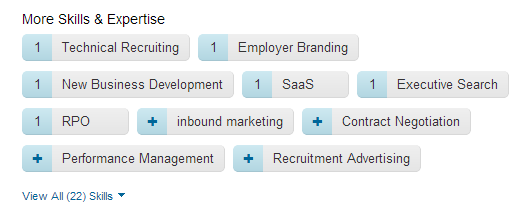
If, as this user has, there are more than 20 skills listed then you’ll need to press View all Skills to see the remaining ones.
You may also have noticed that when you view a connection’s profile, you’re presented with an obtrusive blue box like this:
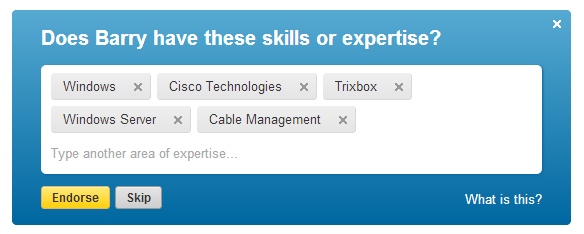
If you press the yellow Endorse button, this will endorse the user for all the listed skills. Be sure to read all the skills in this box carefully before you do though: they’re not always skills that users have listed themselves. LinkedIn scans the user’s job titles and descriptions and will sometimes suggest skills based on these, which aren’t always accurate.
What can a recruiter gain by giving endorsements?
Giving an endorsement isn’t an entirely selfless gesture: a recruiter who gives endorsements stands to gain exposure to more potential candidates and clients. On a basic level, it’s a positive way to make contact with a connection you haven’t heard from for a while. They’ll receive an email notification like this:
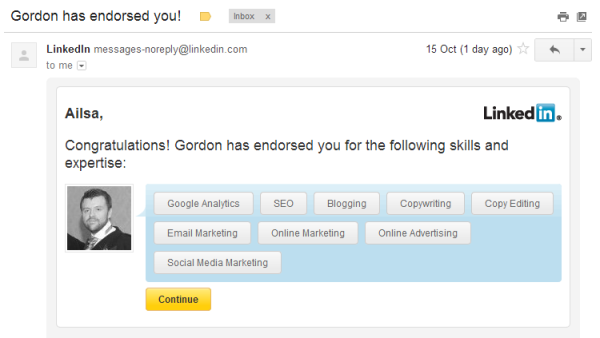
It’s not just your connection’s attention you’ll get either. When someone accepts your endorsement, their connections will see your name appear in their news feeds:

Similarly, your photo appears publicly on their profile. If anyone hovers over that photo, they’ll see your details appear:

Since the endorsements feature is still relatively new, you may even be the first endorsement to appear on some profiles - that’s a good piece of real estate to enjoy while you can. Sourcing for a project manager? Try endorsing someone you know who is connected to project managers, who may spot you in their news feed and find their way back to your profile.
Another reason to give endorsements is to get some back. This should begin to happen quickly when you start endorsing people since the etiquette forming is to be reciprocal, moreso than with recommendations.
Although the feature is too new for any research to have been completed, there’s also a strong possibility that endorsements will influence LinkedIn’s keyword searches. Intuitively it would certainly make sense if, in a search for “RPO”, profiles with more endorsements for that skill appeared above (otherwise equal) profiles with less. This would mean that recruiters who make use of endorsements and rack up some of their own are more likely to get found by potential clients as well as candidates.
If you've been using the new endorsements feature, we'd be interested in hearing your thoughts. Have you noticed increased traffic to your profile? Changes to search results? How do you feel about the way it looks and functions? Let us know in the comments!
Want more on LinkedIn for recruitment? Check out our free white paper, A 3 Stage Guide to Sourcing on LinkedIn.
Ailsa Partridge
Ailsa is a technical writer and solutions engineer working at Instructure in London.

